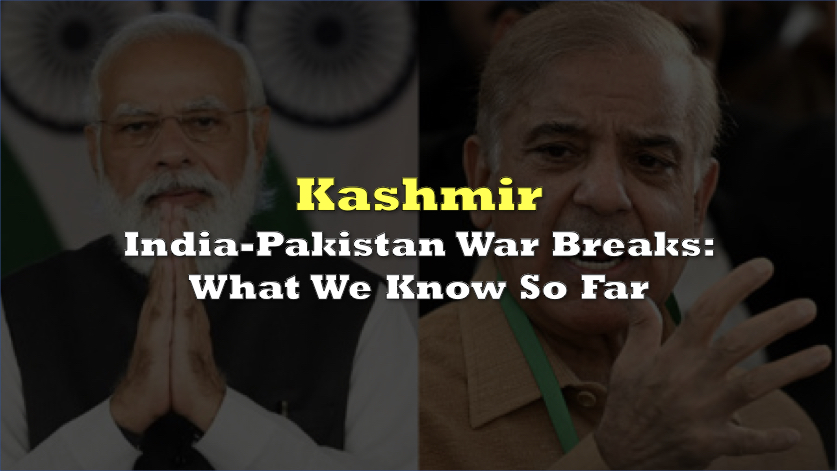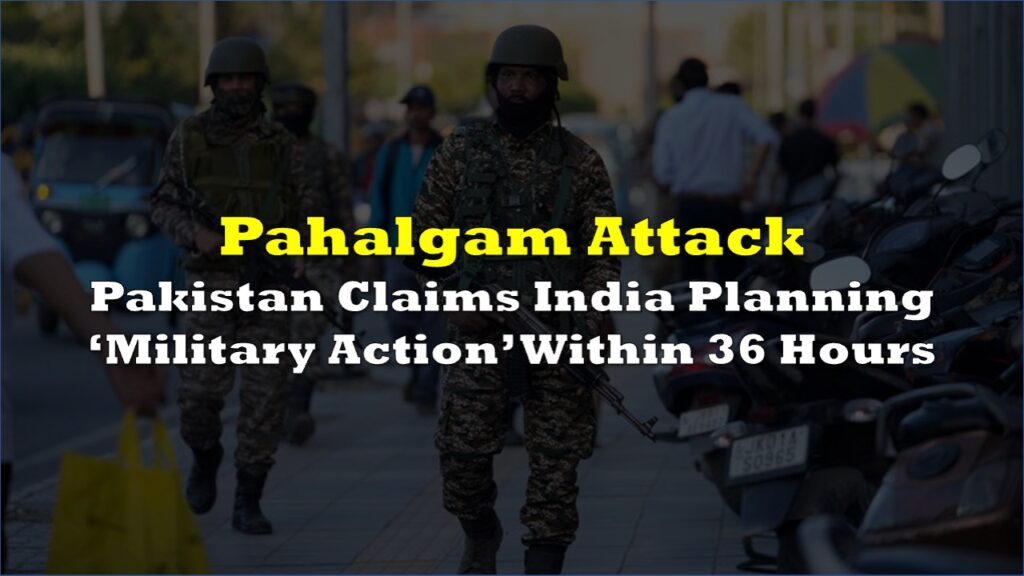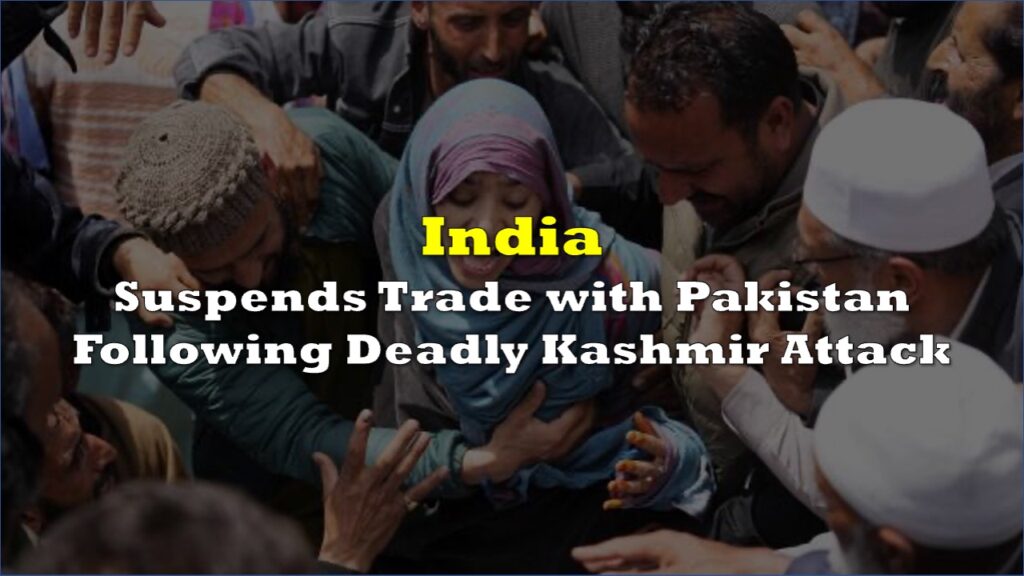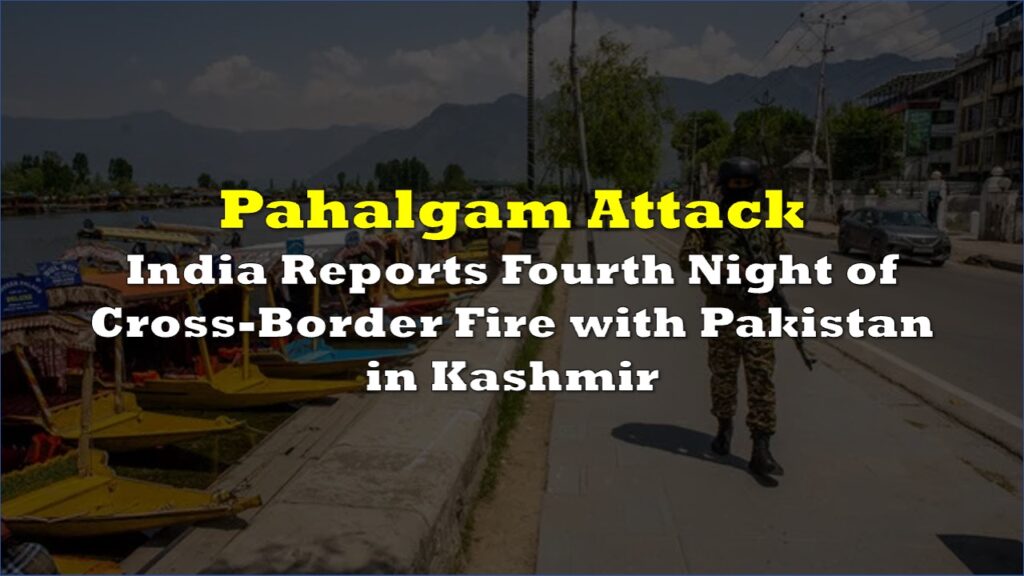India’s early morning missile strikes on targets inside Pakistan and Pakistan-administered Kashmir have plunged South Asia’s two nuclear powers into their most dangerous standoff in decades, triggering a cascade of retaliatory threats, civilian deaths, and global diplomatic anxiety.
Since 1947, the partition of British India created two states—Hindu-majority India and Muslim-majority Pakistan—both of which claimed the region of Kashmir in full. They have fought four wars since, three of them directly over the Himalayan territory, and have built some of the largest standing armies in the world. Today, Kashmir is split between the two nations along a de facto border known as the Line of Control, but peace has never truly taken root.
The latest crisis erupted following a brutal massacre on April 22, when gunmen stormed a scenic tourist site in Pahalgam, Indian-administered Kashmir, killing 26 people, mostly Indian tourists. Survivors said the attackers separated men from women and executed the former on the spot.
New Delhi immediately blamed Pakistan-based militant groups Jaish-e-Mohammed and Lashkar-e-Taiba. Islamabad denied any involvement, offering to cooperate in an international probe—an offer India declined.
Operation Sindoor briefing begins. Foreign secretary Vikram Misri speaking. Foreign secretary says Pahalgam terror attacks were done to destabilise J&K pic.twitter.com/WFuI2bjooj
— Sidhant Sibal (@sidhant) May 7, 2025
“Operation Sindoor”
In the early hours of Wednesday, the Indian military launched a swift and targeted aerial assault dubbed Operation Sindoor, named after the red vermilion worn by married Hindu women—a symbolic reference to the widows left in the wake of the Pahalgam killings.
According to Indian defense officials, nine sites were struck across Pakistan’s Punjab province and Pakistan-administered Kashmir. The operation, lasting roughly 25 minutes, reportedly targeted infrastructure linked to known terror outfits. Indian officials were quick to emphasize that no civilian or Pakistani military facilities were hit.
However, Pakistan painted a starkly different picture. Its military said India launched 24 strikes across six different areas, including dense urban zones and religious sites. Photographs from Muzaffarabad showed a collapsed mosque roof, shattered homes, and bloodied survivors.
Pakistani military spokesperson Lt. Gen. Ahmed Sharif Chaudhry claimed 26 civilians were killed, including five children, with another 46 wounded.
#BREAKING Pakistan military says death toll from India strikes rises to 26 civilians pic.twitter.com/lIslGw0xZz
— AFP News Agency (@AFP) May 7, 2025
“Act of war”
In the immediate aftermath of the Indian strikes, Pakistani forces claimed they had downed five Indian Air Force jets, including three Rafale fighter jets, and one surveillance drone. The wreckage of an unidentified aircraft was found in the village of Wuyan, Pulwama, though India did not confirm any losses.
Prime Minister Shehbaz Sharif convened an emergency meeting of Pakistan’s National Security Committee, which swiftly authorized the military to take “corresponding actions” in response to what was described as an “act of war.”
In a televised address to Parliament later that day, Sharif declared Pakistan would “avenge the loss of innocent Pakistani lives” and accused India of launching an unprovoked attack under cover of darkness.
🇮🇳🇵🇰BREAKING: Indian government officials tell Reuters that three fighter jets crashed in Jammu & Kashmir
— Faytuks Network (@FaytuksNetwork) May 7, 2025
This is beyond embarrassing for India. In less than 12 hours, they have lost at least three fighter aircraft, possibly more, to Pakistan. This is the most aircraft that have been lost by India in a conflict since the Indo-Pakistani War of 1971.
— OSINTdefender (@sentdefender) May 7, 2025
Civilian toll mounts
In Pakistan-administered Kashmir, local officials and aid workers reported mass displacements as families fled into surrounding hills. Hospitals in Muzaffarabad and Lahore were overwhelmed with casualties, while funerals were held for children and women killed in the blasts.
On the Indian side of the Line of Control, cross-border shelling from Pakistani troops killed at least eight civilians. Schools were closed in seven districts, and evacuations were ordered across Kupwara, Rajouri, and Baramulla. In Uri, injured families were treated in makeshift medical tents, and long-dormant civilian bunkers were reopened for use.
🔴#BREAKING | 10 Civilians Killed In Firing, Artillery Shelling By Pakistan Across Line Of Control pic.twitter.com/qXIIXiJDKl
— NDTV (@ndtv) May 7, 2025
Prime Minister Narendra Modi postponed his trip to Croatia, The Netherlands, and Norway, and reportedly chaired a high-level security meeting but remained silent in public. Home Minister Amit Shah praised the armed forces and promised continued retaliation against terrorism, while Defense Minister Rajnath Singh claimed Indian strikes were surgical and civilian-safe.
In Islamabad, Sharif told lawmakers that 80 Indian jets had entered Pakistani airspace, though no Pakistani fighter crossed into India in return.
Masood Azhar, the founder of Jaish-e-Mohammed and a UN-designated terrorist, released a statement claiming 10 of his family members—including five children—were killed in the Indian assault.
Air, net, drills, and bunkers
Pakistan closed large segments of its airspace, while India shuttered northern airports including Srinagar, Jammu, Leh, Amritsar, and Chandigarh. IndiGo canceled 165 flights.
International carriers—Qatar Airways, Emirates, Vietnam Airlines, Malaysia Airlines—rerouted or suspended flights entirely.
In a related development, Pakistan restored access to the social media platform X, which had been blocked since the 2024 general elections. NetBlocks confirmed the platform was once again accessible following the military confrontation.
Across India, the Ministry of Home Affairs ordered civil defense drills in over 240 locations. Sirens wailed, schoolchildren hid under desks, and emergency responders rehearsed blackout and evacuation protocols. Videos showed civilians participating in mock air raid drills in cities like Varanasi, Lucknow, and New Delhi—an eerie reflection of war-readiness in the civilian sphere.
Security was heightened across Kashmir. In Srinagar, hospital staff painted red medical symbols on rooftops, hoping to signal neutrality in the event of further airstrikes. The streets were deserted except for military patrols.
If this turns into a hot war, we will witness one of the biggest information wars in the history of mankind – with endless amounts of AI slop. pic.twitter.com/KOGmqdOsEE
— Pekka Kallioniemi (@P_Kallioniemi) May 7, 2025
Global alarm
UN Secretary-General António Guterres called for “maximum restraint,” warning that the world could not afford a nuclear confrontation between India and Pakistan.
China, which maintains defense and infrastructure ties with both countries, expressed “deep regret” and urged de-escalation. The US, while refraining from assigning blame, confirmed ongoing communication with both governments.
In addition, the UK, EU, Russia, Japan, Turkey, UAE, and Qatar issued separate statements urging calm and dialogue.
Closer to the border, Iran dispatched Foreign Minister Abbas Araghchi to New Delhi in an effort to mediate, following his earlier visit to Islamabad.
Germany and Japan warned that continued retaliation could escalate into full-blown war, while the International Campaign to Abolish Nuclear Weapons issued a grave alert: a nuclear exchange between the two countries could lead to millions of deaths and long-term environmental collapse.
Just two nuclear equipped nations bombing each other.
— Financelot (@FinanceLancelot) May 6, 2025
No big deal right…
First footage of India 🇮🇳 bombing Pakistan 🇵🇰 https://t.co/XDgeGNsxBz pic.twitter.com/Y2EgDJDtaP
Strategic or responsive?
Pakistan accused India of deliberately targeting the Noseri Dam intake structure on the Neelum River in Pakistan-administered Kashmir. The dam is critical for the Neelum-Jhelum Hydropower Project and part of the broader Indus river system governed by the Indus Waters Treaty. Islamabad called the move a breach of international law, with one official warning that water infrastructure had become a “strategic flashpoint.”
India did not confirm targeting the dam but noted that all strikes were limited to known terror infrastructure. A UN inspection team was spotted in Muzaffarabad evaluating damage to civilian structures, including the mosque hit by missile fire.
Military analysts described India’s strikes as carefully calibrated, pointing out that no Pakistani military installations were targeted. But Pakistan’s military, led by General Syed Asim Munir—a former intelligence chief and hardliner on India—faces pressure to deliver a decisive response.
Experts warned that a second round of strikes, particularly one involving military or civil infrastructure in India, could tip the conflict into uncontrollable escalation. Chietigj Bajpaee of Chatham House argued that the crisis was manageable only as long as casualties remained confined to Kashmir and both sides refrained from attacking military bases.
BREAKING: Pakistan's defense minister says the military is ready to refrain from further action if India halts its operations
— Faytuks Network (@FaytuksNetwork) May 7, 2025
Both India and Pakistan are under immense domestic pressure to act forcefully, and both have hardened their military doctrines since their last major clash in 2019. The fact that both nations now possess extensive nuclear arsenals raises the stakes to an existential level.
This is a developing story.
Information for this briefing was found via CNN, Aljazeera, CNBC, and the sources mentioned. The author has no securities or affiliations related to this organization. Not a recommendation to buy or sell. Always do additional research and consult a professional before purchasing a security. The author holds no licenses.








